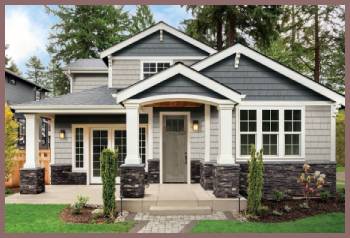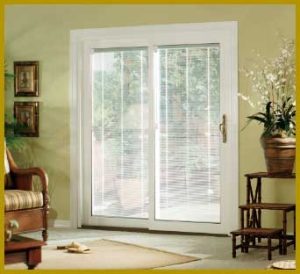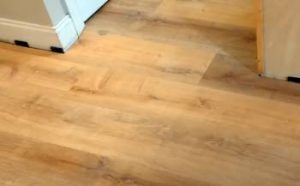When it comes to siding choices, homeowners often find themselves mired in a sea of options. From wood to stucco, fiber cement, and beyond, the choices are almost endless. Yet, amidst this swirling mass of possibilities, one name continues to stand out – Exterior Portfolio Vinyl Siding.
But what makes it so special? And, as is often more important, are there any drawbacks to this popular product?
A Closer Look at Exterior Portfolio Vinyl Siding

Exterior Portfolio Vinyl Siding is an acclaimed brand known for its durability, versatility, and aesthetic appeal. Its unique blend of features offers homeowners an enticing solution to their siding needs.
Pros: The Bright Side of Exterior Portfolio Vinyl Siding
- Durability that Stands the Test of Time
Exterior Portfolio Vinyl Siding is known for its longevity. These products are designed to resist weathering from sun, rain, wind, and even hail. The result? Homeowners enjoy a siding that keeps its charm for years, requiring little to no maintenance.
- Variety is the Spice of Life
Variety is indeed the spice of life, and when it comes to Exterior Portfolio, this is no exception. The brand offers a vast range of color options, styles, and textures. This means you can find a product that perfectly matches your architectural and aesthetic preferences.
- Energy Efficiency: Easy on the Pocket and Environment
Another winning feature is the product’s energy efficiency. Exterior Portfolio Vinyl Siding is well-insulated, keeping your home cool in the summer and warm in the winter. This can lead to considerable savings on energy bills over time.
Read More: About Sono Eclipse Flooring
Cons: The Other Side of the Coin

However, like any product, there are certain considerations to bear in mind when investing in Exterior Portfolio Vinyl Siding.
- Not as Heat Resistant
Vinyl siding can warp or melt when exposed to high temperatures or direct sunlight over prolonged periods. If your home is in an area with intense summer heat or gets a lot of direct sunlight, this could be a factor to consider.
- Not Biodegradable
Though it’s quite durable, vinyl siding is not biodegradable. This means that when it does eventually need to be replaced, the old siding could end up in a landfill, making it a less environmentally friendly option than some alternatives.
The FAQ Corner: Answers to Your Burning Questions
Now, let’s address some frequently asked questions around vinyl siding and Exterior Portfolio in particular.
What is the thickness of Exterior Portfolio siding?
Exterior Portfolio Vinyl Siding typically ranges between 0.044 to 0.046 inches in thickness. This falls within the industry’s standard for premium thickness, offering a good balance between durability and flexibility.
What are the disadvantages of vinyl siding?
As mentioned earlier, vinyl siding can be susceptible to extreme heat and isn’t biodegradable. Additionally, while durable, it can crack upon impact from heavy objects, and repairs may involve replacing entire panels.
What is the best Alside siding?
Alside Prodigy is often regarded as their top-tier product, offering high energy efficiency and an attractive appearance. However, the “best” choice depends on your specific needs and preferences.
What is considered premium vinyl siding?
Premium vinyl siding is usually thicker (around 0.044 to 0.048 inches), has a more natural wood-grain appearance, offers better insulation, and comes with a more comprehensive warranty.
Is thicker vinyl siding worth it?
Yes, thicker vinyl siding is generally worth it. It offers more durability, better insulation, and a higher-quality appearance. However, it also comes at a higher cost, so homeowners will need to weigh these benefits against their budget.
Which grade thickness of vinyl siding should I choose?
The grade thickness of your vinyl siding should be chosen based on your specific needs, climate, and budget. For most residential projects, a thickness of 0.044 inches is considered a good standard. If you live in a harsh climate or want an extended lifespan, opting for a higher grade thickness, like 0.046 or even 0.050 inches, might be worth the investment.
Read More: About Naturally Aged Flooring
Rival Showdown: Exterior Portfolio vs Competitors
Now, how does Exterior Portfolio Vinyl Siding stack up against its competition?
Certainteed Vinyl Siding
Often seen as a premium competitor, Certainteed offers high-quality siding with more than 40 color options. Like Exterior Portfolio, Certainteed also provides excellent durability and a good range of styles. However, Certainteed generally comes at a higher cost, making Exterior Portfolio a more cost-effective choice for those on a budget.
Alside Vinyl Siding
Alside is another strong contender, with a focus on energy efficiency. Its Prodigy line, for instance, is lauded for its insulation capabilities. While Alside also offers a range of styles and colors, Exterior Portfolio outpaces it in terms of sheer variety.
James Hardie Fiber Cement Siding
James Hardie is a unique competitor because it offers fiber cement siding, a different material altogether. Known for its durability, Hardie siding stands up well to extreme weather and is resistant to pests. However, it requires more maintenance than vinyl siding and can be pricier to install.
Wrapping Things Up
In conclusion, while there are many excellent siding options on the market, Exterior Portfolio Vinyl Siding shines for its combination of durability, variety, and cost-effectiveness.
Like any home improvement decision, it’s essential to consider your specific needs, local climate, and budget to make the best choice for your home. With this comprehensive review in hand, you’re well on your way to making an informed decision.



